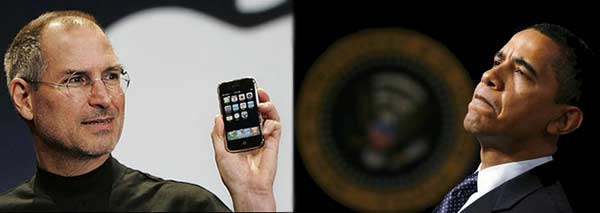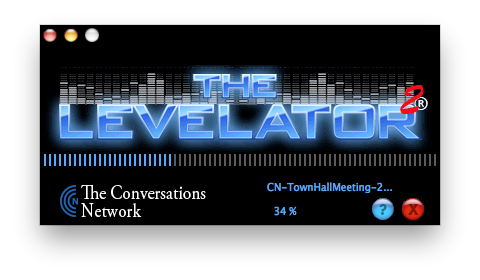Suburban Dogs
HV intern Max Darham just finished this animation, drawings by Tyler Weedon, for the band Real Estate’s song…
“Suburban Dogs” Real Estate
HV intern Max Darham just finished this animation, drawings by Tyler Weedon, for the band Real Estate’s song…
“Suburban Dogs” Real Estate
HV contributed to a half-hour doc produced by Eric Mack for High Plains News We Shall Remain – Life with and after coal (also on PRX).
Our’s is the Colstrip MT section that starts the show.

Colstrip MT- Coal-fired power plant
A film by Danfung Dennis embedded in Afghanistan with US Marine’s Echo Companyas they were dropped behind enemy lines to seize a key bridge. “Battle for Hearts and Minds“:
On July 2nd, 2009, four thousand US Marines of the 2nd Marine Expeditionary Brigade launched a major helicopter assault into a Taliban stronghold in the Helmand River Valley in southern Afghanistan in order to break a military stalemate reached with the Taliban.
“Battle for Hearts and Minds- Trailer”:
Battle for Hearts and Minds Trailer from Danfung Dennis on Vimeo.
 Another stellar StoryCorps today:
Another stellar StoryCorps today:
MJ Seide talks to her granddaughter Genna Alperin about falling in love with her partner, Genna’s biological grandmother.

The Public Broadcasting Act of 1967 established the Corporation for Public Broadcasting. “Independent producers” and “independent production” are mentioned sixteen times, including, “a substantial amount shall be distributed to independent producers and production entities…”
Some of my other favorite phrases:
The Congress hereby finds and declares that —
It is in the public interest to encourage the growth and development of public radio and television broadcasting, including the use of such media for instructional, educational, and cultural purposes;
Expansion and development of public telecommunications and of diversity of its programming depend on freedom, imagination, and initiative on both local and national levels;
It is in the public interest to encourage the development of programming that involves creative risks and that addresses the needs of unserved and underserved audiences, particularly children and minorities;
The Corporation is authorized to —
Facilitate the full development of public telecommunications in which programs of high quality, diversity, creativity, excellence, and innovation.
—Public Broadcasting Act of 1967, as amended
Google economist Hal Varian on the economists of news:
Newspaper circulation has been in decline since 1990, “well before the Internet,” Varian noted, while newspaper circulation crossed against the nation’s population has been declining since 1960; and circulation per household has been dropping since — wait for it — 1945. You can’t blame the Web for that.
Still: “Americans still spend much more time with print newspapers than they do with news online.”
Google news access goes up during the day, down in the evening, and way, way down over the weekend… “What that says to me is that reading the news online is a worktime activity. Most people aren’t paid to sit at a computer and read newspapers. They’re snatching things throughout the day,” Varian said.
People who click on a news article or a video at work as a distraction from other tasks aren’t going to want to pay for it. People are willing to pay for newspapers not because they’re used to paying, according to Varian, but because “It’s a much nicer experience to sit there with a newspaper and a cup of coffee and have that be your leisure time activity.”
via San Francisco News Google Economist Explains Why You Won’t Pay For Online News.
“Ball†by Ries Straver is “at first glance a simple study of tension and expectations but the foreboding characteristics of the girl elevate it to a level of auspicious uneasiness”:
Ball from Ries Straver on Vimeo.
Photography by James Mollison.
Sound Design by Adam Lieber.
via Soup.
Want to be a bona fide journalist? Forget J-school, forget internships, all you need to know is:
“How To Report The News” Charlie Brooker, BBC4 Newswipe
via Robert Patterson.
 I read these things so you don’t have to: a 30-page essay, “IP Radio – A vision of radio in the Internet age” (Jan09 pdf), by Pierre Bellanger, CEO of Skyrock, the French radio & popular social net. Within are history and prognostications on all things digi-radio-future, but few new perspectives (“Radio, like the written press, the music industry and television, is changing”, etc.).
I read these things so you don’t have to: a 30-page essay, “IP Radio – A vision of radio in the Internet age” (Jan09 pdf), by Pierre Bellanger, CEO of Skyrock, the French radio & popular social net. Within are history and prognostications on all things digi-radio-future, but few new perspectives (“Radio, like the written press, the music industry and television, is changing”, etc.).
Did find a few entertaining morsels, like this (pg11) on the singularity and un-CG-ability of the human voice:
Just as a penguin can recognise another among thousands, since time immemorial we have been able to discern a wealth of incredible nuances and emotions in the human voice. We owe our survival to our brain’s ability to decipher the details of the voice, further heightening the effect of visual absence.
Pixar’s digital masterpieces such as Toy Story or Ratatouille reproduce the most complex visual experiences like wet fur or the shine of bodywork with a computer, while the characters express their emotions as well as human actors. Despite these wonders, for the voices the studio uses actors, such as Tom Hanks or Paul Newman. A voice is more complex than an image.
And this historical radio data (pg19) — unsourced, so can’t vouch for validity:
Radio experienced an auspicious period in the United States between 1980 and 2000. In 1995 radio represented a little over 10% of media advertising investments, or $12 billion. Prosperous radio stations generated results equivalent to 30% of their turnover. In 1995 regulations on ownership of several radio stations in the same market were relaxed. This 20 allowed the Clear Channel group to carry out a number of acquisitions; today, it owns about 900 stations with combined revenue of $3.5 billion in 2005.
The Clear Channel policy targeted profitability by standardising and homogenising programmes. Audiences considered risky and insolvent, such as adolescents, were abandoned. Further, morning shows, already attacked by influential puritanical groups and repeated fines from the authorities, were sanitised.
As a result, radio stations were reduced to simply playing lists of tried and tested hits aimed at an audience aged from 25 to 49 and hosted by DJ-robots. These flows were burdened with a maximum of advertising slots. Like a plane whose engine is shut off to save fuel and keeps flying for a few moments, the system seemed to work.
Then it began to show the first signs of weakness at the very moment when the younger generation was seizing the musical offer exploding on the Internet: the number of 18 to 24 year olds listening to the radio has dropped by 20% over the last ten years and 85% of adolescents now find their new music on the Internet.
In 2007 radio’s turnover was $20 billion and still represented about 10% of the media advertising market but it is a decreasing trend. For now, the years of generous cash flow are over.
However, despite everything, according to the Institut Arbitron radio audiences continue to grow (93% of the population listens to 18.5 hours a week on average!) but the length of listening time is dropping.
Finally, this possibility for targeted per-user radio ads based on IP address and other online info (pg24):
The half a million listeners who listen instantly to Difool’s morning show on Skyrock correspond to various characteristics. The same station can attract very different people which is how a large station becomes successful. The addressing process of IP radio means that people listening to the same programme can hear different adverts which correspond to their needs. Such multiple, simultaneous targeting is good news for advertisers which can concentrate their investments on suitable targets, for radio stations which can better serve their clients and are therefore more attractive, and for listeners who will hear adverts which are more relevant to what they are interested in.
IP radio combines radio’s power as a mass media with the advertising precision of the Internet.
How can an IP address be qualified, as it is occasionally random on some machines? Identification of the machine can be reinforced via a small file left on the hard disk (cookies) or through a code entered by the user at the start of the session (login) which identifies the individual. Moreover, the generalised spread of mobile terminals and their use for telecommunications will increase relevance between user and machine. This is currently the case with mobile telephones which are even more individual than PCs.
Even creepier targeted-ads could combine radio w/ the user’s web access data (pg26): “Someone listening to the radio just after looking at an automobile website could hear an ad
hoc advert via the radio.”
Don’t think it’s possible? Think again: “Even without cookies, a browser leaves a trail of crumbs” Ars Techica | Panopticlick EFF research project.
via Technology360.
![]() Peace Talks Radio is raffling a “Peace Guitar to help them stay on the air. The instrument is sign by Bonnie Raitt, Lyle Lovett, Roberta Flack, Taj Mahal, Leo Kotke and other musical luminaries.
Peace Talks Radio is raffling a “Peace Guitar to help them stay on the air. The instrument is sign by Bonnie Raitt, Lyle Lovett, Roberta Flack, Taj Mahal, Leo Kotke and other musical luminaries.
The revus are in…
“Hitler responds to the iPad”
I thot f’sure Obama was gonna tell us last night that “Everyone gets and iPad.” A jobs and edu stimulus all in one.
A clip from maybe the world’s first “jihadist comedy” film:
The flick’s from Chris Morris of the UK mockumentary TV series Brass Eye. Premiered at Sundance, distributed by Warp.

![]() Hearing Voices from NPR®
Hearing Voices from NPR®
083 Shortcuts- 21st Century III: Decade One
Host: Peter Bochan of WPKN-Bridgeport CT
Airs week of: 2010-01-27
“Shortcuts- 21st Century III” (52:00 mp3):
The final hour in our three hour-long retrospective of this first decade of the century, and the millennium:
We survey selected speech, song, and soundbites of the stories and celebs from 2006 thru 2009: Christ’s passion, planetary climate change, presidential contenders, Ponzi schemes, collapsing economies, Tiger, Michael, Sully, Britney, Bush, Obama, foreclosure, bailout, Bradgelina, Miss USA, You Tube, and the continuing decline of western civilization.
Shortcuts are assembled, mixed and mashed by audio wizard Peter Bochan, of All Mixed Up, WBAI-NYC and WPKN-Bridgeport CT. (All three 21C Shortcuts hours are at PRX.)
 Seems we’re approaching a “Who’s your favorite beatle?”* moment when both Steve Jobs and Bacark Obama address planet Earth. This Wednesday (Jan 27) there’s a POTUSA State of the Union speech and an Apple “Come see our latest creation” event.
Seems we’re approaching a “Who’s your favorite beatle?”* moment when both Steve Jobs and Bacark Obama address planet Earth. This Wednesday (Jan 27) there’s a POTUSA State of the Union speech and an Apple “Come see our latest creation” event.
Who’s talk will you pay most attention; which will likely most affect your life? Your answer reveals much about you.
So what’s it gonna be: SOTU or Stevenote?
*Bernard Mickey Wrangle had developed a psychological test of his own. It was short, simple, and infallible. To administer the test, merely ask the subject to name his or her favorite Beatle. If you are at all familiar with the distinct separate public images of the four Beatles, then you’ll recognize that the one chosen reveals as much about the subject’s personality as most of us will ever hope to know.
—Tom Robbins, Still Life with Woodpecker (1980).
 The Legal Risk Blog, of the Knight Citizen News Network, offers legal opinions from way-qualified attorneys on pubmedia issues. KCNN: Post a Question or read those already answered, such as:
The Legal Risk Blog, of the Knight Citizen News Network, offers legal opinions from way-qualified attorneys on pubmedia issues. KCNN: Post a Question or read those already answered, such as:
Question: If I am considering using information from someone’s Facebook profile in my next article or blog post, are there any legal landmines that I need to avoid?
and:
Question: What is a Digital Millennium Copyright Act takedown notice and what should a blogger or Web site producer do if he/she receives one?
Another KCNN offering: Funding Database:
From 2005 to today, J-Lab has tracked $135,859,660 million in grants awarded to at least 128 news projects [325 grants from 207 foundations]. In the searchable database you can find these grants by the name of the foundation that issued funding, by the name of the news project that received grant support, or by state.
This database includes funding only for news and information projects. It does not include funding for public broadcasting programs, for the underwriting of documentaries, for journalism training or student news services.
A fallen soldier’s tribute at Fort Richardson AK, documented by my friend, photojournalist Scott Favorite:
“Memorial”
Major update release of The Levelator® (free: mac, win & lin) from The Conversations Network:
It’s software that runs on Windows, OS X universal binary, or Linux Ubuntu that adjusts the audio levels within your podcast or other audio file for variations from one speaker to the next, for example. It’s not a compressor, normalizer or limiter although it contains all three. It’s much more than those tools, and it’s much simpler to use. The UI is dirt-simple: Drag-and-drop any WAV or AIFF file onto The Leveler’s application window, and a few moments later you’ll find a new version which just sounds better.

rx proves himself the premiere bi-partisan presidential cut-up; so pay up, folks, there’s a new Taxman in town:
“Taxman Obama vs Rx”
A new movie on MT mtn sheep-herders, “ Sweetgrass“:
An unsentimental elegy to the American West, “Sweetgrass†follows the last modern-day cowboys to lead their flocks of sheep up into Montana’s breathtaking and often dangerous Absaroka-Beartooth mountains for summer pasture. This astonishingly beautiful yet unsparing film reveals a world in which nature and culture, animals and humans, vulnerability and violence are all intimately meshed.
via Linda Iverson.

![]() Hearing Voices from NPR®
Hearing Voices from NPR®
082 Shortcuts- 21st Century II: Decade One
Host: Peter Bochan of WPKN-Bridgeport CT
Airs week of: 2010-01-20
“Shortcuts- 21st Century II” (52:00 mp3):
Part two in this three hour-long retrospective of the first decade, of the century, of the millennium:
We survey selected speech, song, and soundbites from 2003 thru 2005; from the invasion of Iraq, to electing a U.S. President, to the flooding of New Orleans.
Shortcuts are assembled, mixed and mashed by audio wizard Peter Bochan, of All Mixed Up, WBAI-NYC and WPKN-Bridgeport CT. Next week, the final part: 2006-2009 (all three at PRX).